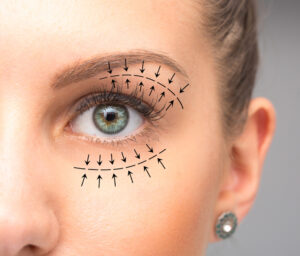Do you need reconstructive surgery? Are you a woman who has undergone a mastectomy? Or, perhaps you’ve experienced a traumatic injury or disease that has permanently affected some part of your body that you want fixed. Let us restore and repair you.
Reconstructive surgery can help repair the part of your body that is affected by birth defect, traumatic injury, and disease such as cancer.
According to the American Society of Plastic Surgeons, more than 1 million reconstructive surgery procedures are performed each year. Our plastic surgeons have performed thousands of reconstructive surgery and are very experienced in all sorts of reconstructive surgery.
WHAT IS RECONSTRUCTIVE SURGERY?
Reconstructive surgery is performed on abnormal structures of the body, caused by birth defects, developmental abnormalities, trauma or injury, infection, tumors, or disease. It is generally performed to improve function, but may also be done to approximate a normal appearance.
WHO NEEDS RECONSTRUCTIVE SURGERY?
There are basically 2 categories of patients who can benefit from reconstructive surgery: Those with
- Congenital deformities, otherwise known as birth defects, and those with developmental deformities,
- Acquired deformities as a result of accident, infection, disease, or in some cases, aging.
DIFFERENT TYPES OF RECONSTRUCTIVE SURGERIES
If you can imagine how many injuries, birth defects, diseases, or disfigurement issues that can arise in our imperfect lives, there is a procedure that can help improve the problem, whatever it may be. These include:
SKIN CANCER RECONSTRUCTION
Skin cancer is the most common form of cancer in the United States. More than 500,000 new cases are reported each year-and the incidence is rising faster than any other type of cancer. While skin cancers can be found on any part of the body, about 80 percent appear on the face, head, or neck, where they can be disfiguring as well as dangerous.
The different techniques used in treating skin cancers can be life saving, but they may leave a patient with less than pleasing cosmetic or functional results. Depending on the location and severity of the cancer, the consequences may range from a small but unsightly scar to permanent changes in facial structures such as your nose, ear, or lip.
Reconstructive techniques- ranging from a simple scar revision to a complex transfer of tissue flaps from elsewhere on the body-can often repair damaged tissue, rebuild body parts, and restore most patients to acceptable appearance and function.
Most skin cancers are removed surgically. The procedure may be a simple excision for small cancer, which usually leaves a thin, barely visible scar. If the cancer is large, however major surgery may be required which may leave a more visible scar. Mohs surgery, a special procedure in which the cancer is shaved off one layer at a time. Mohs surgery is performed only by specially trained physicians and often requires a reconstructive procedure as follow-up. Dr Okoro has performed thousands of Mohs reconstruction.
FACIAL TRAUMA RECONSTRUCTION
Every year thousands of people sustain trauma to the head and face resulting in complex soft tissue injuries as well as fractures to the underlying skeleton, which, if not correctly diagnosed and treated, may cause permanent functional and cosmetic deformities. Although immediate treatment is the best way to attain pre-injury facial appearance, advances in craniofacial surgery offer hope for patients with pre-existing post-traumatic deformities that require revisional surgery, as well.
FLAP AND MICROVASCULAR SURGERY
Using advanced techniques that often take many hours and may require the use of an operating microscope, plastic surgeons such as Dr Okoro can now transplant large sections of tissue, muscle or bone from one area of the body to another with the original blood supply in tact.
A flap is a section of living tissue that carries its own blood supply and is moved from one area of the body to another. Flap surgery can restore form and function to areas of the body that have lost skin, fat, muscle, and/or skeletal support.
- A local flap uses a piece of skin and underlying tissue that lie adjacent to the wound. The flap remains attached at one end so that it continues to be nourished by its original blood supply, and is repositioned over the wounded area.
- A regional flap uses a section of tissue that is attached by a specific blood vessel. When the flap is lifted, it needs only a very narrow attachment to the original site to receive its nourishing blood supply from the tethered artery and vein.
- A musculocutaneous flap, also called a muscle and skin flap, is used when the area to be covered needs more bulk and a more robust blood supply. In a bone/soft tissue flap, bone, along with the overlying skin, is transferred to the wounded area, carrying its own blood supply.
- A microvascular free flap is a section of tissue and skin that is completely detached from its original site and reattached to its new site by hooking up all the tiny blood vessels using operating microscope. Dr Okoro has performed hundreds of flaps and microvascular surgery.
HEAD AND NECK RECONSTRUCTION
Patients with head and neck cancer may require combined therapy, which includes surgery, radiation therapy, and chemotherapy. Following the removal of the cancer, reconstruction surgery is often required. Successful reconstruction requires careful preoperative patient assessment and development of an individualized treatment plan. Advances in the multidisciplinary treatment of these patients have led to improvements in the quality of life after cancer reconstruction
BREAST RECONSTRUCTION OR REDUCTION
These procedures are available for women who have undergone a mastectomy or for women who have abnormally large breasts that are causing back problems or other related health issues; men also undergo breast reduction. See the breast section for more information.
UPPER & LOWER EXTREMITY RECONSTRUCTION
Severe upper and lower extremity trauma can be a devastating injury, leading to significant functional consequences. Advances in surgical and microsurgical techniques have dramatically improved the treatment of complex limb injuries. Injuries such as complex open fractures, injuries involving loss of skin and soft tissue, and amputations can frequently be successfully reconstructed leading to functional outcomes.
WOUND REPAIR
Traumatic wounds may exposes tendons, bones, joints, or nerves. Coverage of such wounds may require simple closure to advanced technique from simple skin graft to a fully padded coverage with its own blood supply in the form of a flap. The word flap simply means a piece of tissue from the body that is used to reconstruct another area. Flaps may be local and stay connected by a piece of skin, regional and stay connected only by tiny blood vessels or free flaps that come completely separated and then rejoined by sewing together tiny blood vessels. The care of wounds requires a multidisciplinary approach and may include vascular, orthopedic, and plastic surgery in conjunction with nurses specialized in the treatment of wounds. This will allow optimal therapy and possibly non-surgical treatment.
HOW MUCH DOES IT COST?
Most reconstructive surgeries are covered by health insurance. Please review your insurance plan carefully.
For more information about Reconstructive surgery, please




